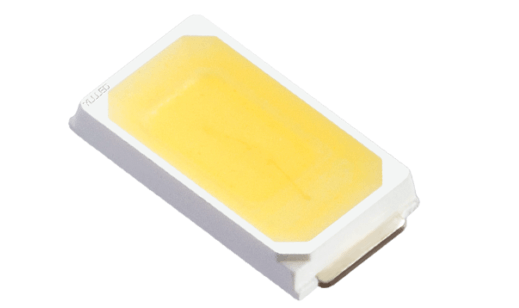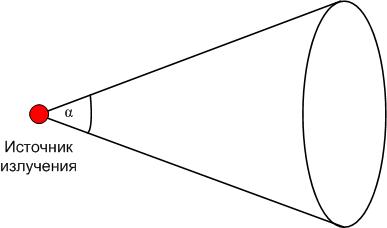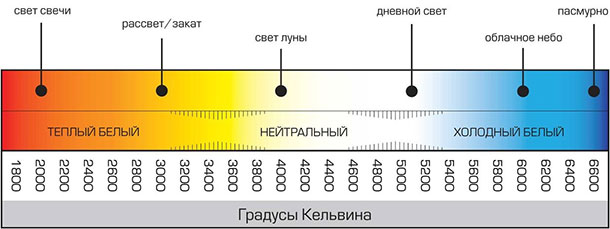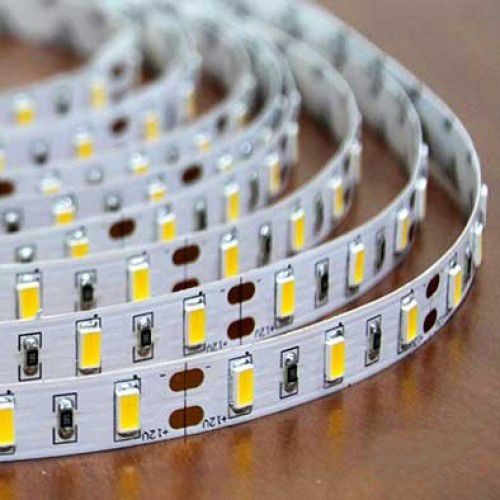Description of 5630 SMD LED
The market of elements to create LED lighting is saturated with a large number of light-emitting devices. Without some training and knowledge to understand at once in a variety of semiconductor elements is difficult. In this review to help the novice lighting engineer collected characteristics of SMD-LED 5630 and parsed their impact on consumer properties.
Deciphering
To the untutored eye the designation of the 5630 SMD LED is incomprehensible. There is nothing complicated in this marking, and the information it carries is important for the application of the device:
- The numbers 5630 stand for the body size of the fixture. Its dimensions are 5.6 x 3.0 mm, which is the system used for illuminating LEDs. For indicator elements, the dimensions of the housing are denoted in inch units.
- SMD - abbreviation of Surface Mounted Device, a device for surface mounting. This category includes lead-free radio elements, which do not require drilling holes in the board. SMD parts are soldered with contact pads to the board polygons on the mounting side.
- LED stands for light-emitting diode. In Russian, it means a light-emitting diode, LED (LED, LED).
The same principle is used for other light-emitting elements used in lighting technology.

What is the power of 5630 SMD LED
There is a certain confusion about the concept of the power of the LED used for lighting. This confusion is introduced by marketers. It is necessary to separate the two concepts:
- Electrical Power Consumption. Equals the product of the operating current and the voltage drop across the element. It is this power that the electric power consumer pays for, it is easy to measure. For a single LED 5630 it is about 0,5 W (product of 150 mA by 2,8...3,6 V).
- Equivalent power. Equal to the power of an incandescent bulb that produces the same luminous flux as the LED. LED 5630, giving (depending on modification) from 50 to 60 lm, replaces the ordinary light bulb with a capacity of 10-15 watts. This parameter is more difficult to measure and there is a wide field for marketing tricks.
Consequently, to create a light source equivalent to a 60-watt incandescent bulb, you need 4-6 LED 5630, and they will consume from the power system 2-3 watts.
Constructional Description
LED 5630 consists of a ceramic substrate on which a crystal with a radiating p-n junction is mounted. This substrate has sufficient thermal conductivity to allow the LED to operate with an external heat sink. The crystal is encapsulated in a transparent compound, and a layer of phosphor is applied on top. When a direct voltage is applied, radiation from the p-n junction initiates the luminescence of the phosphor.

There are two versions of the LED 5630 body - with two pins and with four pins. Functionally, there are no differences between the two versions. Galvanic pads 1 and 2, 3 and 4 (in the four-pin version) are equal. For notation pin assignment in the area of the cathode lead there is a notch in the form of an oblique notch.
Technical specifications
It is logical to divide the technical parameters of LEDs into electrical (inherent to any diode) and optical (which are characterized by illuminating light emitters). The technical parameters are summarized in the table.
| Rated current, mA | Highest peak current, mA | Highest reverse voltage, V | Maximum operating temperature, deg.C | The declared service life, h |
| 150 | 300 | 1,2 | +85 | 25000 - 30000 |
Some of the features (maximum luminous flux, power, voltage drop, etc.) are mentioned above. With the optical parameters should be considered in more detail.

The solid angle of light scattering is most simply represented as a cone coming out of the light source. Within the boundaries of the cone the light will be visible, outside the cone it will not. The angle of opening of the cone will be the required value. For the semiconductor device in question it is 120 degrees.
The color rendering index is denoted by the letters Ra or CRI. Its value characterizes the luminaire's ability not to distort the natural colors of the surrounding objects.

It is measured in relative units. Ideally, the LED should have Ra=100, but such a device has not yet been created. A very good value is considered to be CRI=80...90. At such illumination distortion of natural colors is practically not observed. A value of 70...80 is not bad, but anything below that is not worth using.
Another important parameter for the lighting LED is the color temperature, which determines the emission spectrum. The 5630 is available in the following modifications:
| Color temperature, K | 2800-3500 | 4000-4500 | 6000-6500 | 7000-8000 |
| Luminescence characteristic | Warm white | Natural white | Cool white | Cold white |
| Applications | Comfort light for living rooms | Daylight for living rooms, offices | Jewelry Shops, Museums | |
This parameter is intuitively unclear and there are many myths and misconceptions about it. In fact, it has nothing to do with the real operating temperature of the semiconductor device, and characterizes the emission spectrum of the phosphor. It is impossible to describe the luminescence of a device by a wavelength - the emitted range is quite wide. Therefore, to characterize the spectrum we use an analogue of the black body radiation region (BBSR). Simplified, it looks like this: if we take BST, then at absolute temperature zero (0 K) it will look black. But if you start heating it, it will begin to emit visible color - at first the glow of the red part of the optical range, with a further increase in temperature the light will shift to the blue-violet region. The spectrum corresponding to the ACT temperature is used to describe the emission parameters of LED lighting devices.

Important! The specified characteristics of the smd 5630 LED are stated by the manufacturers in the datasheets of the LED. They may differ slightly from manufacturer to manufacturer. It should also be borne in mind that the LED emitters produced by reputable manufacturers, the real characteristics in most cases correspond to the declared ones. Cheap elements of unknown origin may have declarative parameters that differ for the worse. Unfortunately, such devices now the market is flooded with, they have almost superseded branded products.
How and where to use such a LED

LED 5630 is used as an element of lighting devices with a wide range of applications. It completely replaces outdated incandescent bulbs (with improved energy efficiency and durability):
- In spotlights for area lighting;
- in lighting of residential, office and industrial buildings;
- for lighting equipment of automobiles;
- for aesthetic lighting of architectural structures;
- for illumination of artificial landscape;
- for other purposes.
LED 5630 are also used to create LED strips that are used for local illumination of interiors, service engineering structures (stairs, exits, etc.) and outdoor elements.

LEDs of size 5630 are popular with the developers of light-emitting devices and lighting systems. The reason for the wide use was the harmony of technical parameters, cost and energy efficiency in operation.